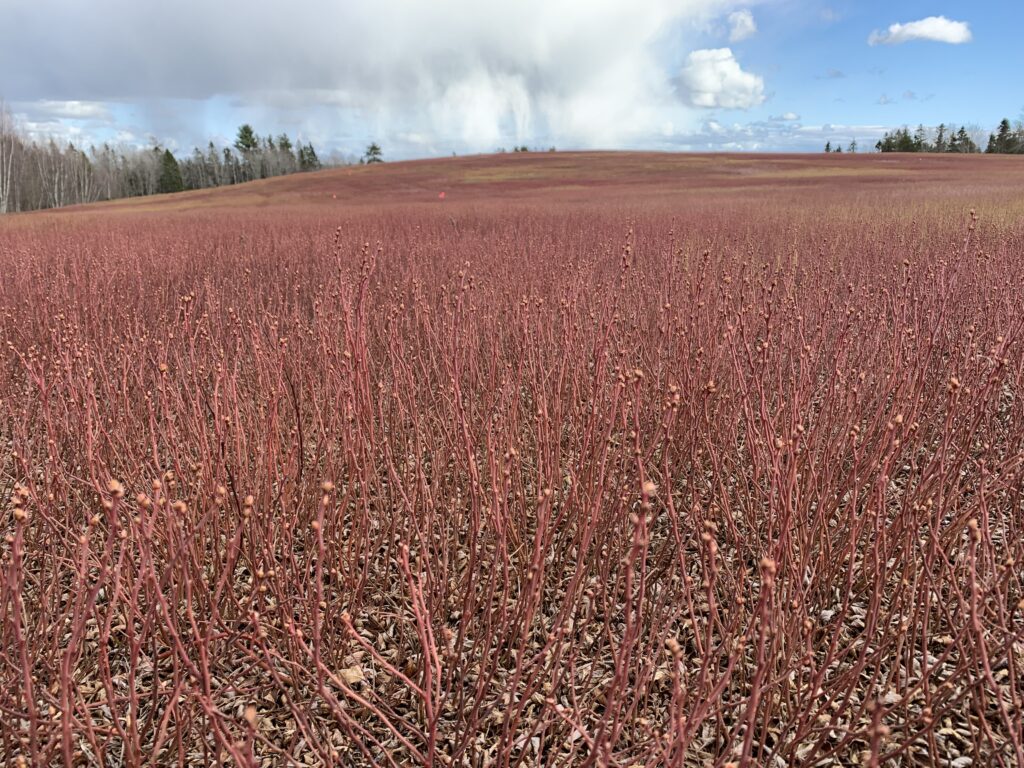
Features
Fruit
Methods of crop management timing in wild blueberries
June 3, 2023 By Hugh Lyu, wild blueberry specialist, Perennia
 Spring wild blueberry crop field with fruit buds at F2 stage. Photo courtesy of Hugh Lyu.
Spring wild blueberry crop field with fruit buds at F2 stage. Photo courtesy of Hugh Lyu. Timing is extremely important when it comes to crop management. Two important things to always consider are:
- when the crop stages take place, and
- the timing of pests, such as diseases and insects.
To effectively manage pests for optimum marketable yield, understanding pests’ life cycles and associated best management timings can achieve a greater result and ensure resources are well spent. Let’s focus on the timing of crop development stages with special attention on the wild blueberry system in Nova Scotia.
Commercial wild blueberries are a perennial field crop managed under a two-year production cycle: prune and fruit years. Due to this crop’s perennial nature and its unique management system, it brings a more complex crop development schedule; therefore, there are more stages in different production years to cover in wild blueberry management.
Commercial wild blueberry production begins with year one as a prune year, including plant emergence and development, tip dieback stage, bud development, bud hardening and leaf drop. In a fruiting year, plants start with bud swell, fruit bud development, bloom, fruit formation and ripening.
A calendar method is traditionally and widely used in agricultural production to predict crop development and plan activities. Growers use past seasons’ records and life experiences to predict when they should perform management activities. However, this method has limitations and risks of missing timings if the current season’s weather differs from before. This is becoming increasingly common due to climate change, which could lead to early or late development of crops.
For example, we normally see wild blueberry plants start emergence around mid-May, but this also varies from region to region. In a fruit year, we typically observe bloom and pollination start in early June in Nova Scotia. It’s recommended to track farm activities, and the calendar method for wild blueberry production still has its place in this cropping system. However, due to the influence of climate change and the widespread locations of wild blueberry fields in the province, using calendar dates to guide production has its limitations. New management tools to predict crop and pest development are needed to improve this farming system’s efficiency and productivity.
One method being recommended more and more is to track growing degree days (GDD), which measure heat accumulation based on the daily temperature. The basic concept is that, as plants and insects receive enough heat from the environment and reach the required accumulation of growing degree days (GDD), they develop into different growth stages. Growing degree day models of crops, weed species or insects study those species’ growth stages aligning with their GDD.
Once the model is developed, it can be used year after year to understand and predict how plant development progresses based on the current season’s daily temperature starting from a pre-determined date at the beginning of the growing season. GDD is not perfect, but it is a more reliable method to predict plant and insect development than calendar days. GDD is a weather-based indicator and uses current-year weather data to predict development stages based on the developed GDD models.
Based on published GDD information on some critical stages, such as plant emergence, tip dieback, fruit bud F2 stage and bloom, we encourage growers to consider crop development under the calendar days and GDDs to create an effective and efficient management plan.
Print this page